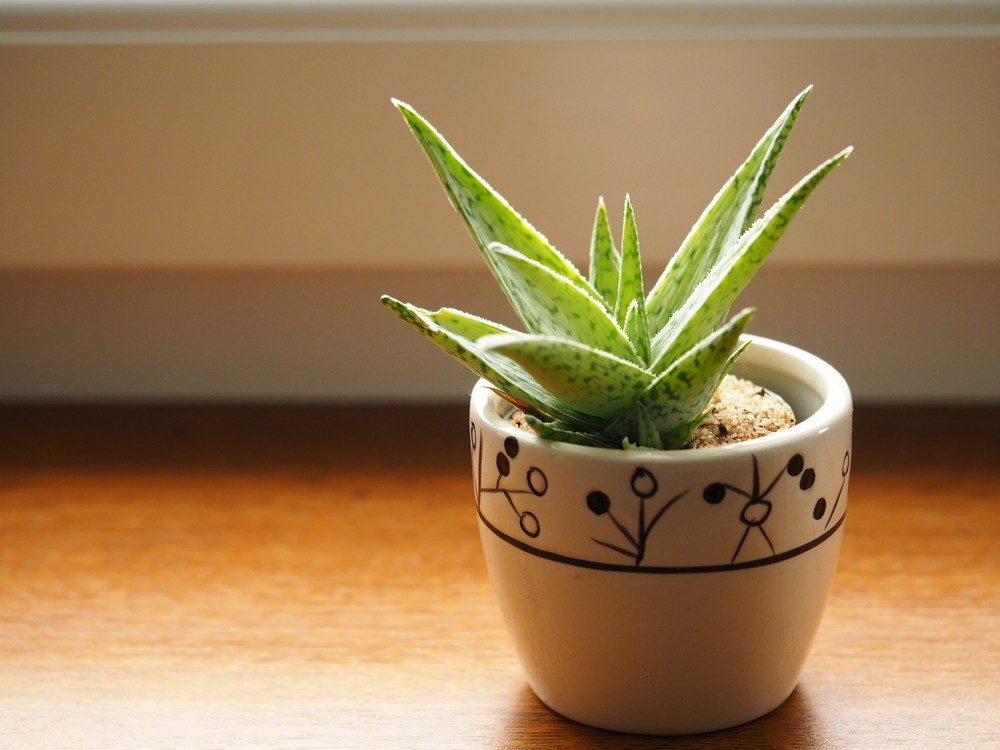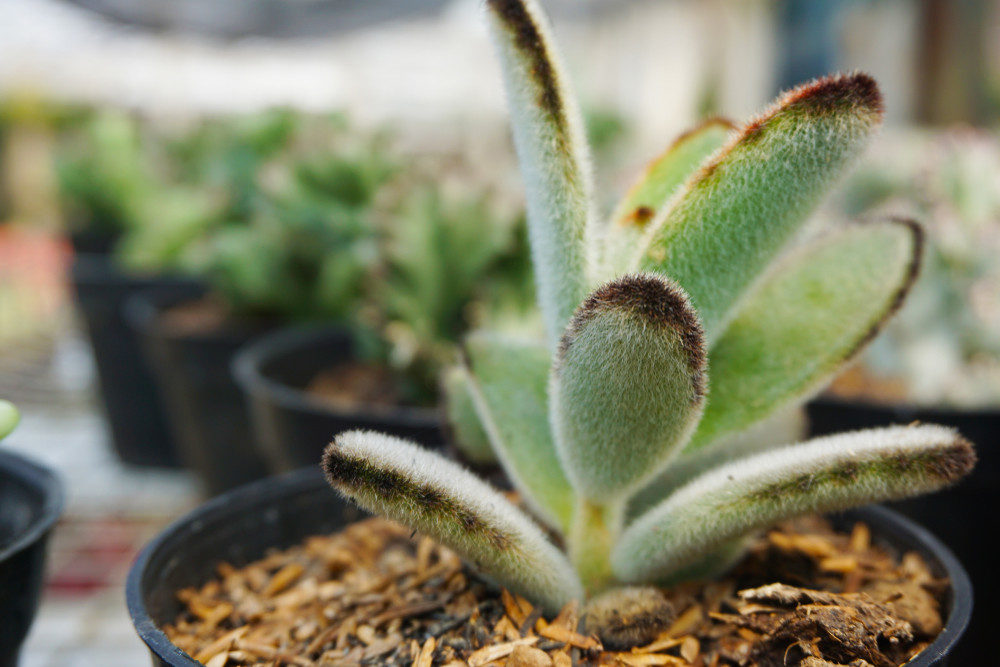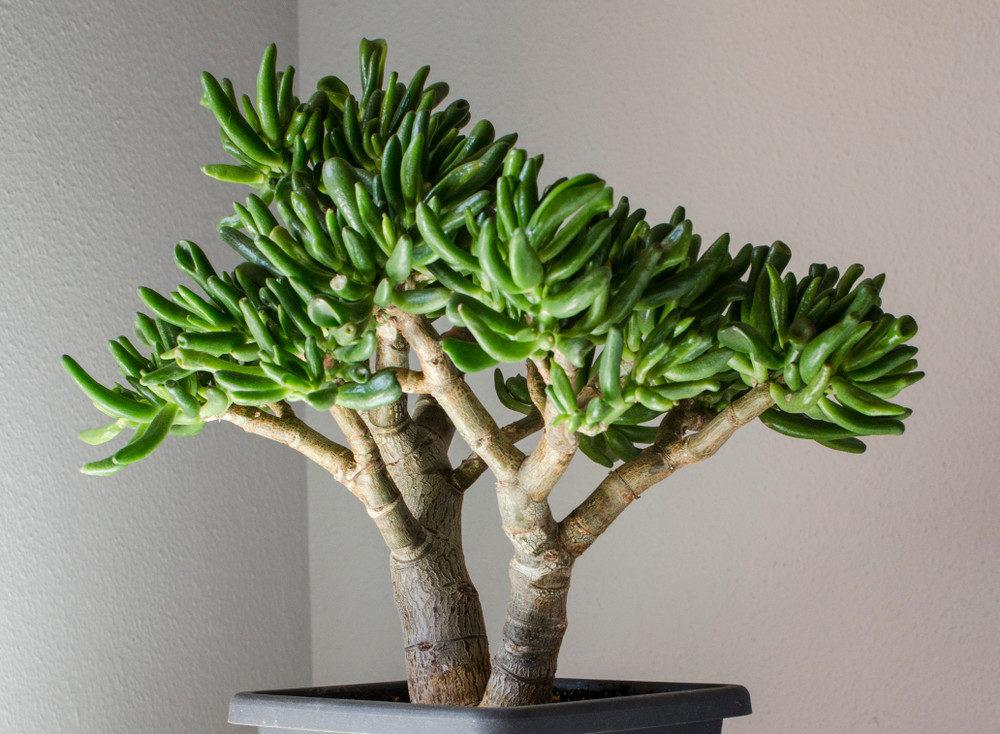
They’re cute, colorful, readily available, and hard to kill. If this sounds appealing to you, succulents may be the perfect addition to your houseplant collection.
These trendy, drought-resistant plants not only clean the air, increase oxygen in the home, and give life to a drab space, succulent arrangements also serve as incredible pieces of living art for a unique decor style.
Succulent varieties vary significantly in size and color, some adorable growths coming in containers no bigger than a quarter, while others may grow over the edges of large pots.
There is no end to the opportunities for cultivating and enriching your succulent collection. When cared for properly, these hardy plants will thrive for years to come.
The term succulent encapsulates any plant that stores water for long periods of time in its leaves, roots, or stem.
This broad description includes aloe plants, cacti, and mini rosettes, to name just a few. The combinations, however, are immense, and as you read about which succulents may work best for your home, keep in mind that nothing is stopping your creativity.
Explore various containers to house your new plants, try new varieties, and most of all, have fun!
Remember, not all succulents are equally suited for every home. Consider light, water, and space restrictions as you figure out which types may best fit your needs.
Let’s take a look at the most magnificent succulents to spruce up your abode.
1. Aloe Plant

Perhaps one of the most popular succulents, this medicinal plant not only adds a gorgeous focal point to any table array, but it is also immensely useful for treating sunburn and various other wounds.
Aloe is incredibly hardy and can thrive well in partial light, making it a good option for the bedroom or another area of the house that doesn’t receive high amounts of sunlight or heat.
Utilize this plant’s unique properties for soothing wounds by pinching off a small piece and squeezing the juice over the affected area.
2. Sedum morganianum ‘Burrito’
This trailing succulent does well when left to grow and overfill pots. It provides a nice amount of coverage for a sparse corner of the house or a table with a few other decorations.
Burrito sedum needs a lot of light, however, so make sure that it is near a window.
Be careful that this is not a drafty window in the winter, as this particular type of sedum is exceptionally susceptible to cold temperatures.
Try propagating this succulent to fill more pots for gifts or other arrangements.
3. Panda Plant

Panda plants have thick green leaves, covered in soft fuzz and edged with copper spots, giving it a blue tinge and touchable appearance.
This velvety succulent does very well indoors in full/filtered sun.
If you are hesitant to take the plunge as a succulent grower or are not confident in your ability to keep your plants alive, this succulent is a great beginner option as it is very forgiving of less than ideal circumstances.
4. Portulacaria afra “Dwarf Jade”
This plant may also be known as “Elephant Bush” or “Elephant Food.”
This tree-like succulent is very versatile and can be trimmed to stay small or, if given a large enough pot, could stretch up to 12 feet tall. When this plant is cared for properly, it can serve as an incredible addition to any home.
As with other succulents on this list, it does best in a sunny area of the house.
5. Crassula ovata ‘Gollum’

Also known as “Gollum” or “Finger” jade, this bright green succulent makes an excellent houseplant and adds a pop of vibrancy to any living space.
Err on the side of caution when watering, as overwatering this plant can quickly lead to wilt and rotted roots.
6. Haworthia attenuata “Zebra Cactus”
These plants are essentially the flamboyant-looking version of aloe vera plants without the soothing properties.
The minuscule zebra cactus is an excellent option for a small garden or a tiny pot, as they don’t usually exceed 6 inches in height.
7. Echeveria
These thick-leaved rosettes are incredibly hardy and do well indoors under the proper conditions.
They tend to grow in clusters and do well when left to fill whole pots or as the centerpiece in a succulent arrangement.
Echeveria comes in many colors, sizes, and textures, so you can create intricate displays made up of this single variety.
8. Crown Of Thorns
Most succulents are not prized for their flowers, as many don’t ever flower and their beauty comes from their natural green hues.
If you are sold on only having succulents in your home, but also want to enjoy vibrant blooms, the crown of thorns is a fantastic option.
In bright areas, this floral succulent will bloom all year long, giving a much-needed color boost in the dead of winter.
9. Zamioculcas zamiifolia
Not every home has easy access to the amount of sunshine that is needed for most succulents to stay healthy and grow properly.
If you live in a darker area or a home with few windows, this shade hardy plant is the best choice for you.
Though this succulent looks more like a traditional houseplant, it has the same easy-to-care-for qualities as other, more uniquely structured succulents.
10. Christmas Cactus
Another flowering succulent, this cactus blooms in beautiful shades of orange, pink, purple, yellow, red, or white, depending on the variation.
This succulent differs from most in that it does best when only the top 2 inches of soil is allowed to dry out. Since it appreciates a more moist environment, this beautiful plant does well in climates with higher humidity levels.
11. Snake Plant
If you really have a knack for killing houseplants and want a foolproof option, the snake plant is your best bet.
This practically indestructible succulent can survive even the most forgetful caretaker.
Tips For Growing Indoor Succulents
Though the growing needs of each succulent are unique to the particular plant, there are a few concepts involved in succulent gardening that are universally applicable.
Make sure you don’t overwater:
Wait until the soil dries out thoroughly before watering again.
When you do water, give your succulent a sufficient amount of water to re-moisten the soil all the way to the bottom of the pot.
Place pot in an area with enough light:
Most succulents love sunlight.
Place them near windows or in bright rooms. Insufficient light can lead to your plants getting stretched out and “leggy.” Invest in a grow light if you live in a cloudy climate.
Cultivate appropriate soil:
Due to their capacity to hold water, succulents must be in light soil that allows for air and proper drainage.
Using 1 part regular garden soil to 1 part perlite or pumice should serve this purpose adequately.
Fertilize regularly:
Indoor plants always respond better when given proper nutrients.
Fertilizing your succulents increases their fullness, color, and longevity. Use a standard fertilizer diluted to half strength to avoid burning your succulents.
Repeat this process every few months. Avoid fertilizing in winter when plants are dormant.
Now that you know which succulents work best indoors, you can start expanding your collection!
Incorporate plants into your decor and enjoy discovering new varieties and combinations to more fully express your personality and individuality.
